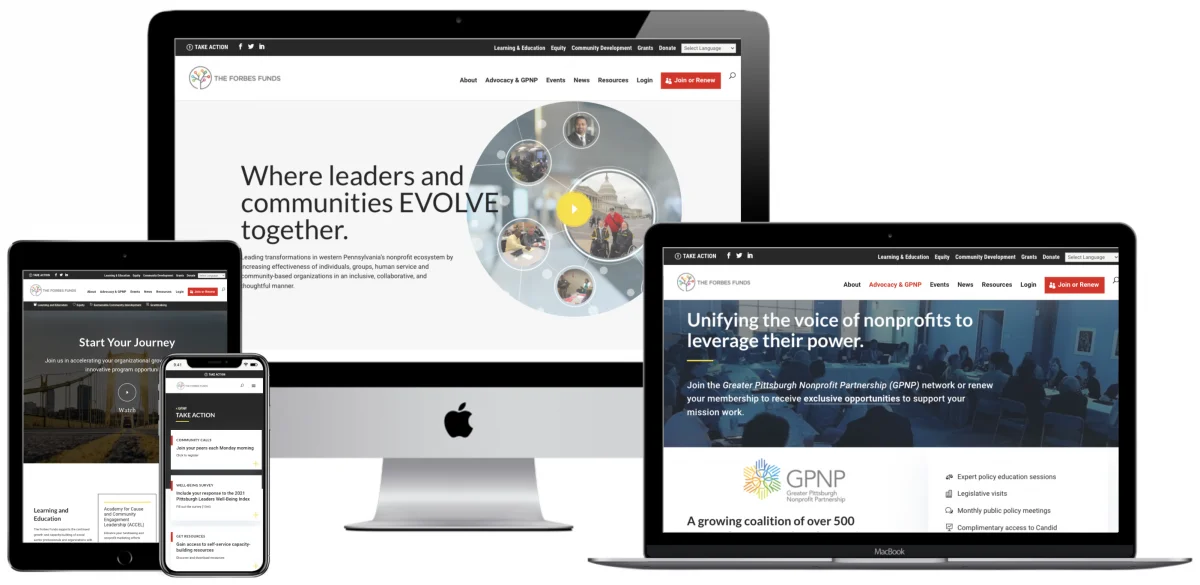Modern websites vary but many are leveraging the power of minimalism and AI-driven unique user experiences to make websites as easy to navigate for the end-user as possible. We’ve all had bad browsing experiences whether that’s a website that’s not mobile responsive or where the content is so confusing you don’t even know what they do.
In 2023 and beyond, a well-designed website is often the first point of contact between a business or organization and its audience. The design of a website plays a pivotal role in attracting and retaining visitors, conveying information effectively, and facilitating user interactions. To create a successful website, designers must understand and apply key design principles that balance aesthetics and functionality. Let’s delve into these principles and why they are important.
1) The design must be user-centered
User-centered design is the foundation of an effective website. This principle prioritizes the needs, preferences, and behaviors of the target audience. How do you find out what your audience wants and needs? Well, you need to do a little research.
- User research: Understand the demographics and characteristics of your audience. Conduct user surveys, interviews, and usability testing to gather valuable insights. You want to know who you are marketing your product or service to so that you know how to meet their needs. Ultimately, if you’re serving people in the community, you need to know what they want and what they wish to see.
- User persona creation: Develop user personas to represent different segments of your audience. These personas help in tailoring the design to specific user groups. Your user persona is the ultimate idea customer (or customers) you’re trying to target – and companies often hone in on specific characters as if they are a real person with a 9-5 and 2.5 children and exactly what time of the morning they doom scroll on their phone.
- User flow analysis: Map out the user journey through the website, from the first visit to desired actions, such as making a purchase or signing up for a newsletter.
- Accessibility: Ensure that the website is accessible to all users, including those with disabilities. Comply with WCAG (Web Content Accessibility Guidelines) to create an inclusive design. Here are our pieces on user-centered design and accessibility advice.
The bottom line is your website must be easy to use for the people who use it which is why you need to know who uses it, how they access the site, what they need to do, and design around those needs.
2) The website must be mobile-responsive and functional
With the majority of web traffic originating from mobile devices, a responsive design is imperative. A mobile-responsive website adapts its layout and content to different screen sizes. Read here about mobile optimisation.
To be mobile responsive, keep these key considerations in mind.
- Flexible grid layouts: Use flexible grids and layouts that adjust to different screen widths, ensuring content remains readable and accessible.
- Media queries: Implement CSS media queries to apply different styles and layouts based on the user’s device, screen size, and orientation.
- Touch-friendly elements: Make buttons and links touch-friendly, ensuring they are easily tappable on small screens.
- Loading speed: Optimize images and content to reduce page load times on mobile devices.
Visually, most web developers absolutely love how their sites look on a beautiful, high-res screen; however, that’s not how your users will often see the content so the layout needs to be adaptive and attractive on all platforms.
A good website must also be functional and user-friendly with intuitive navigation, a good search functionality, and the ability for users to provide feedback so that you can develop a website that works with their needs.
3) It helps to have a minimalistic approach to design
Minimalism is a design approach that emphasizes simplicity and decluttering. A minimalistic website design is visually clean, with the removal of unnecessary elements. Here’s our recent blog on the role of minimalism in web design.
What is included in minimalistic web design?
- Simplified navigation: Streamline the navigation menu to reduce clutter and make it easy for users to find what they’re looking for.
- Whitespace: Use whitespace (empty space) effectively to create a sense of spaciousness and improve content legibility.
- Limited color palette: Choose a limited color scheme to maintain visual consistency and focus on essential elements.
- Typography: Utilize clear, legible fonts and limit the number of typefaces used on the site.
Minimalism doesn’t just mean a single page or boring, unattractive design where the website is simply a white box with a bit of black text here and there; it’s simply a reaction against the maximalistic, flashy, busy designs of yesteryear.
4) Creating a visual hierarchy prioritizes content
Visual hierarchy is crucial for guiding user attention and helping them prioritize content. It involves arranging elements on a page to direct the eye and convey the relative importance of each element.
To establish a visual hierarchy, a website needs contrast, typography, whitespace (again), and focal points.
With contrast, you want a contrast in color, size, and typography to emphasize important elements such as headings, calls to action, and key messages. Typography variations, such as font size and weight can distinguish headers from body text and highlight key content. Whitespace used strategically can create separation between elements and guide the user’s focus. And, finally, focal points, use images, icons, or other visual cues to create focal points that draw attention to specific areas of the page.
5) The content must be high-quality and CTAs visible
In modern web design, content takes center stage. Prioritizing content ensures that the website delivers the information users are seeking effectively. Outside of design, content is the website. The content is often what the design is based around – the headings, the taglines, the About section, the service pages, and so on.
Delving into how to create an effective content strategy is outside the scope of this post. But here’s our post on why blogging matters and here’s our post on content strategy vs content tactics. A general rule of content is that any written content should be quality over quantity; logically organized (information architecture) and accessible via a well-structured menu and navigation; and have clear CTAs.
CTAs need to be clear, telling the user what action to take; be contrasting in design so they stand out; have action-oriented language such as “Get started” or “Buy now”; and be placed prominently on the page, such as in the top of the page, middle of the content, or end of the article.
6) Page loading speed
Page loading speed is a critical factor in website design. Slow-loading pages can lead to higher bounce rates and user frustration. Here’s a quick rundown on how to optimize pages.
- Image optimisation: Compress and optimize images to reduce file sizes while maintaining image quality.
- Minimize code: Remove unnecessary code, such as unused scripts and styles, to reduce the website’s load time.
- Content Delivery Network (CDN): Implement a CDN to distribute website content from servers closer to the user, reducing latency.
- Browser caching: Enable browser caching to store static resources locally on users’ devices, reducing the need to re-download them on subsequent visits.
Your page load time should be under two seconds; in our high-speed era, anything over that will just frustrate your user. 40% of users abandon sites if they take more than three seconds to load.
7) Scalability
Finally, website design should be scalable to accommodate growth and evolving needs. Scalability allows the website to expand without requiring a complete redesign. You can design a website that can scale in future by creating a modular design structure that allows for new sections or features to be added. You also need responsive design as new device trends evolve and a good CMS (content management system) that can support scalability. And continue to optimize performance to ensure the website’s performance can handle increased traffic and data.
The takeaways
Considering aesthetics and functionality can seem overwhelming, which is why there are experts to help. If you need a website for your organization or nonprofit, get in touch with Key Medium today.

Elaine Frieman holds a Master’s Degree and is a UK-based professional editor, educational writer, and former marketing agency content writer where she wrote articles for disparate clients using SEO best practice. She enjoys reading, writing, walking in the countryside, traveling, spending time with other people’s cats, and going for afternoon tea.

